
Answer the question number 2 Q 2 Compare the working principle of a LED and a photodiode
Explore the differences between LED and photodiode and the various application areas where they are used. LED stands for Light Emitting Diode and is a semiconductor device that emits light when an electric current is passed through it, while a photodiode is a semiconductor device that converts light into an electrical current. Both of these technologies are used extensively and have different.

The energy band diagram in a) photoconducive and b) photovoltaic... Download Scientific Diagram
What is LED? A light-emitting diode (LED) is a semiconductor device that emits light when an electric current flows through it. When current passes through an LED, the electrons recombine with holes emitting light in the process. LEDs allow the current to flow in the forward direction and blocks the current in the reverse direction.

working of LED (Light Emitting Diode) & photodiode. difference between LED and photodiode. YouTube
The Main difference is LED is a source of light while photodiode is a light sensor. Before we move to the differences, let's understand what are LED and Photodiode: LED : A LED is a semiconductor device that emits light when an electric current is passed through it.

Difference Between IR LED And Photodiode
LED generates light with the. ⦿ Chapter: Semiconductor ⦿Topic : State difference between Photo Diode and LED.LED and Photodiode are reverse of each other.
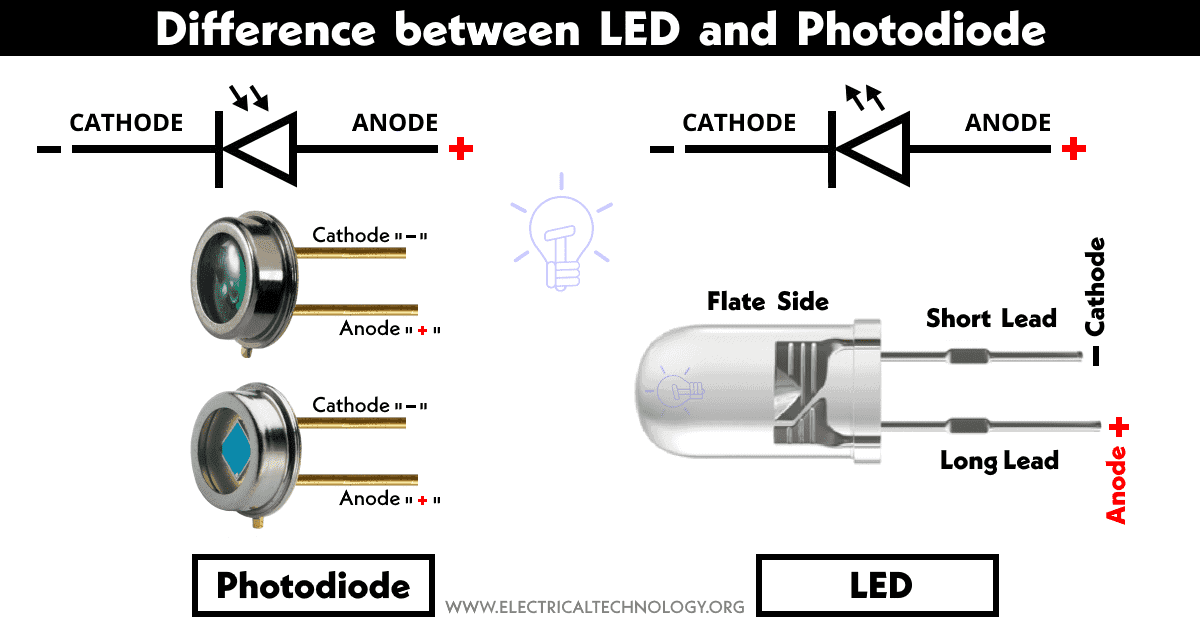
Difference between LED and Photodiode Electrical Technology
Types of Photodiodes. There are four main types of photodiodes: PN photodiode: a simple p-n junction photodiode used in reverse-biased mode. PIN photodiode: a p-n junction photodiode with an intrinsic semiconductor layer between the p- and n-type material at the juncture. It is used when a greater surface area for light exposure is needed.

LED Vs Photo Diode Difference Between LED & Photo Diode 2020 YouTube
What is the Difference between LED and Photodiode? LED - Light Emitting Diode: Construction, Working, Types, & Applications; Symbol of Photodiode. The symbol of a photodiode is exactly like an LED light-emitting diode with rays of light falling on it as shown in the figure below.
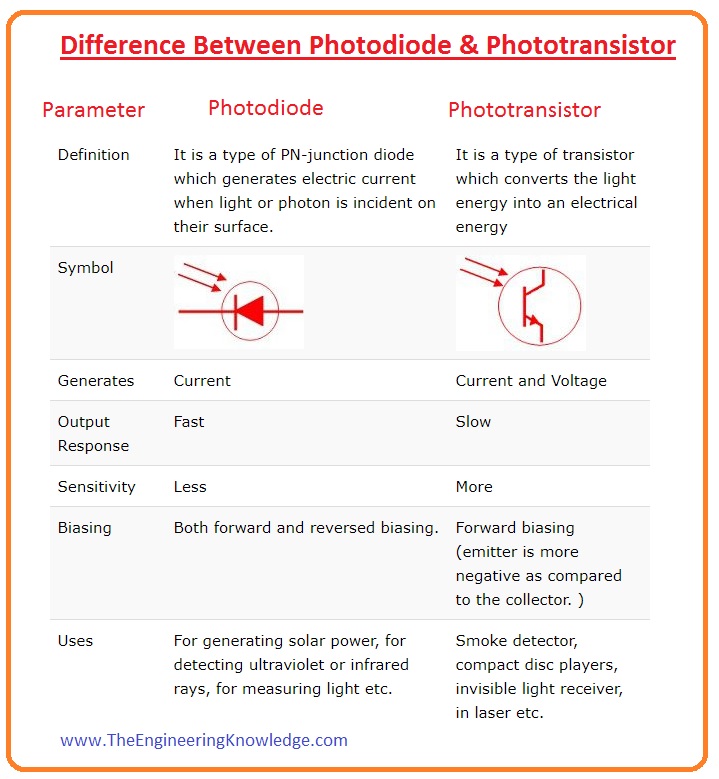
Difference Between Photodiode & Phototransistor The Engineering Knowledge
This EzEd video explains the difference between LED & Photo Diode
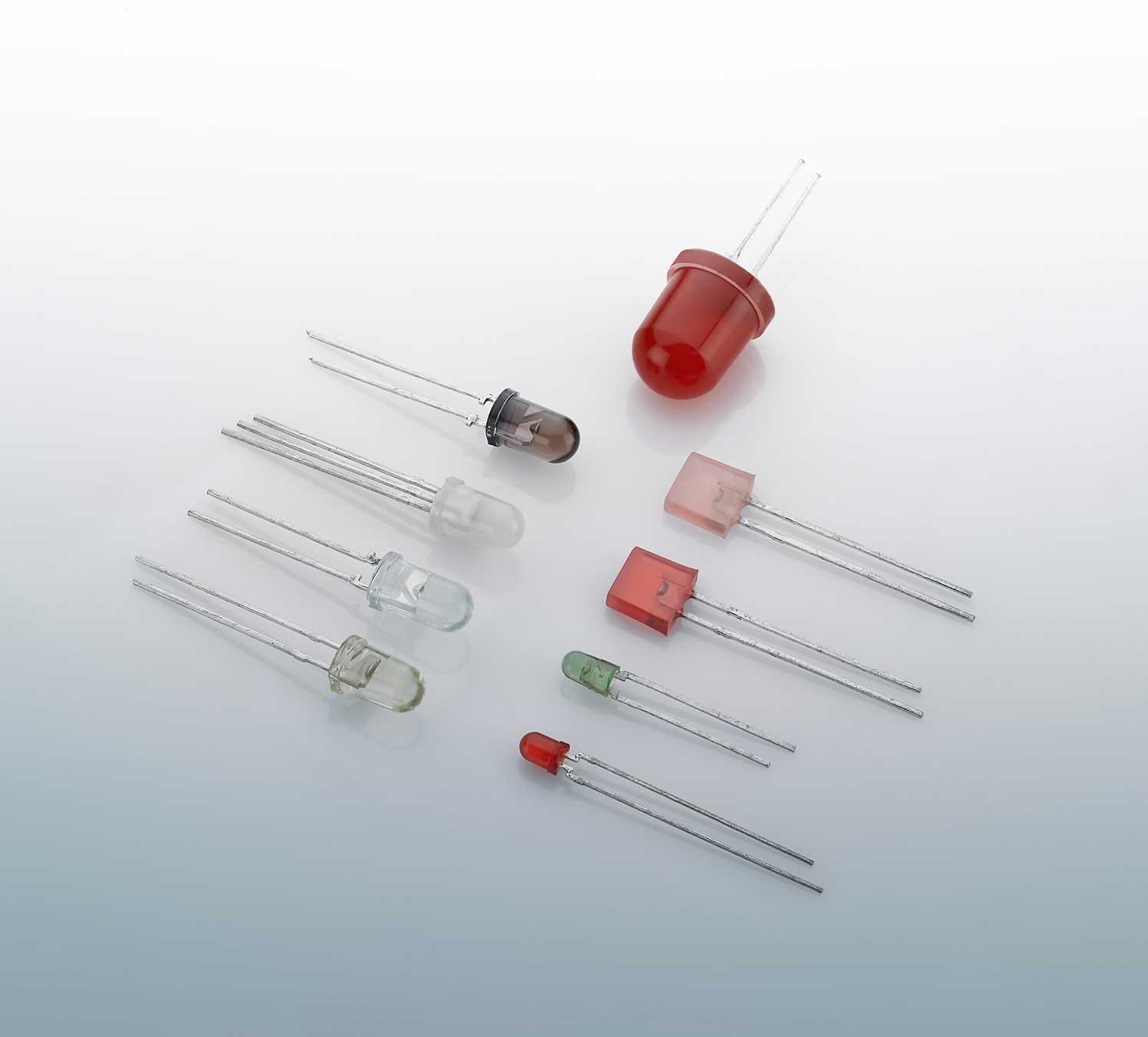
Photodiodes and Powerful LEDs from Jenoptik Jenoptik USA
The LED operates on the principle of electro-luminance while photodiode works on the principle of the photoconduction. In a Light emitting diode, when electrons and holes recombine, the energy is released in the form of light. Thus, it is termed as Light-emitting diode.On the contrary, photodiode generates current when it is exposed to the source of light.
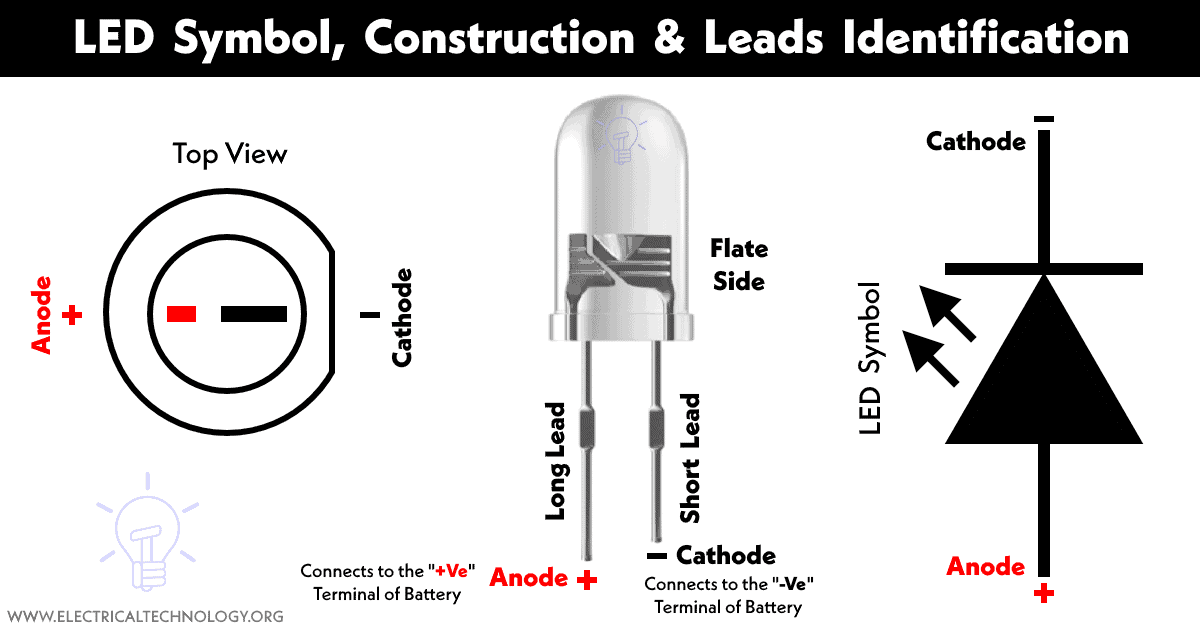
Difference between LED and Photodiode Electrical Technology
In the photodiode i-V curve above, V photo is typically only about 70% of the bandgap energy E gap. The photocurrent is limited by the photon flux, the recombination rate, and the re-emission of absorbed light. [6] The area of the orange rectangle indicates the power generated by the solar cell, which can be calculated as P = i x V.

LED and PHOTODIODE ARE THEY SAME? YouTube
Comparison of LED and Photodiode: LED. It is a light emitting device. It is always forward-biased. Electric energy is converted into light energy. GaAs or GaP or GaAsP are the material used for fabrication. Light is emitted due to the recombination of electrons and holes. Radiated power changes due to changes in temperature.

What is the Difference Between IR LED and Photodiode Compare the Difference Between Similar Terms
Main Differences between Photodiode and LED. Here are some of the main differences between LED and Photodiode. Definition. LED or light-emitting diode emits light when a current pass through it. A photodiode is a type of diode that generates current when light falls on it. Function.
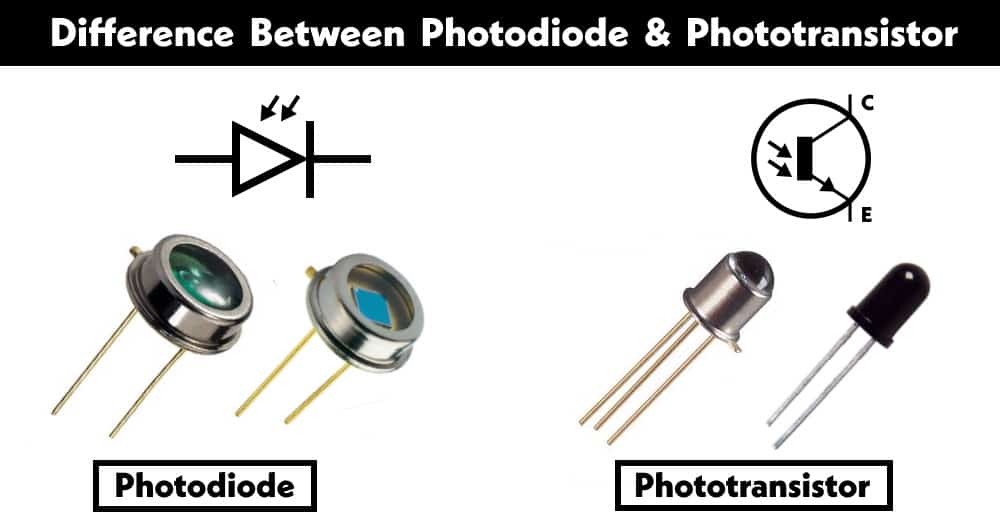
Photo Diode Images
Photodiode work on reverse biased, LED work on forwarding bias. The major difference is that the photodiode works on the principle of photoconduction while in when we are using LED it to work on the electro-luminance. Photodiode converts light energy into electrical energy and on the other hand LED converts electrical energy into light.
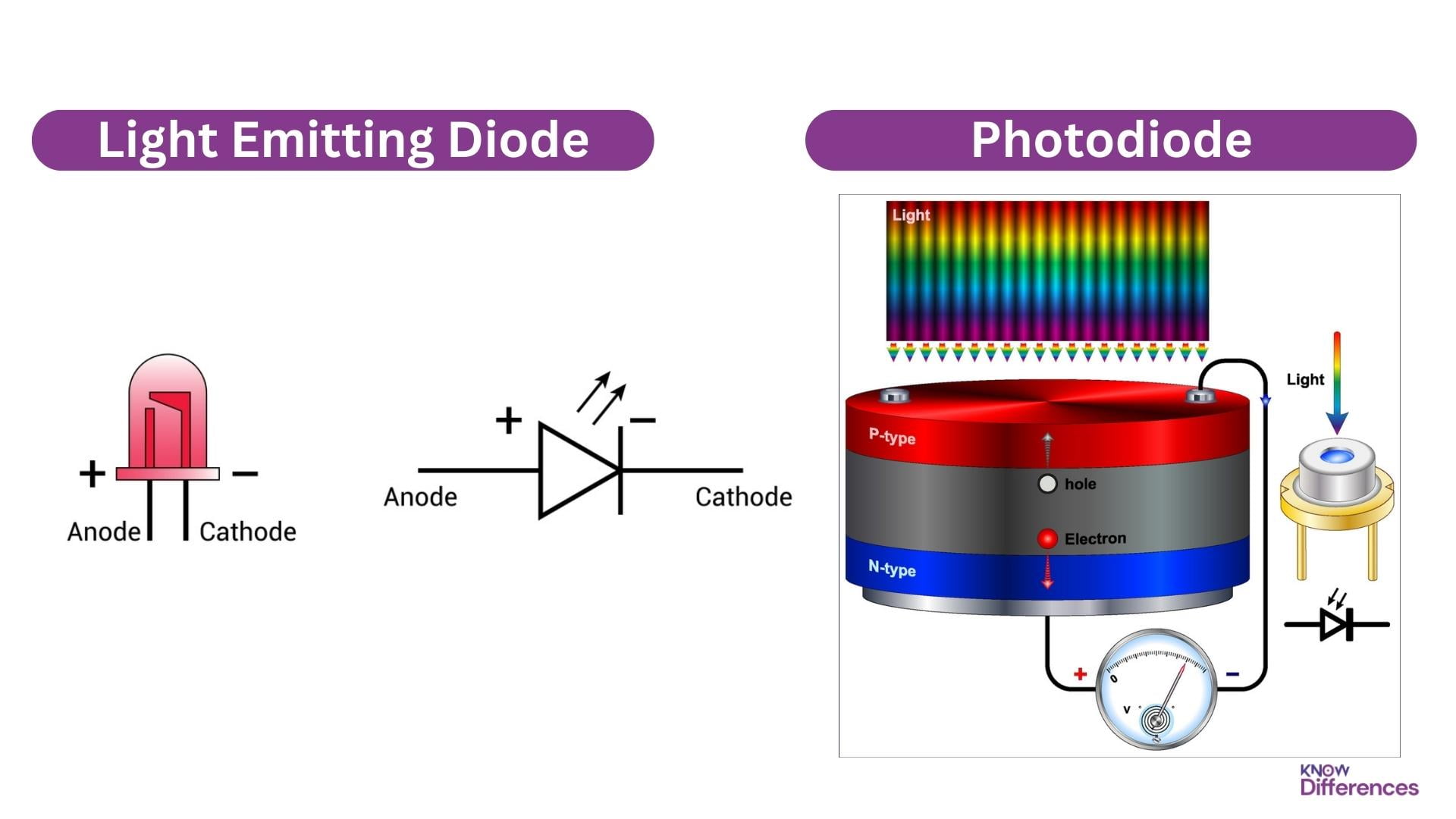
Difference Between LED and Photodiode
Diodes can be classified into several types: LED (diode that emits light), laser diode, solar cell, Zener diode, photodiode, and p-n junction diode. They are made of semiconductors like germanium or silicon (group 14 elements). Light Emitting Diode. LED or Light Emitting Diode emits light when the electric current is made to pass through it.

What Is The Difference Between Hemothorax And Pneumothorax Relationship Between
Key Differences Between LED and Photodiode Function and Operation. LEDs function as light emitters and operate by converting electrical energy into light energy. When current flows through the LED, it causes the semiconductor materials to emit photons, resulting in the generation of light.
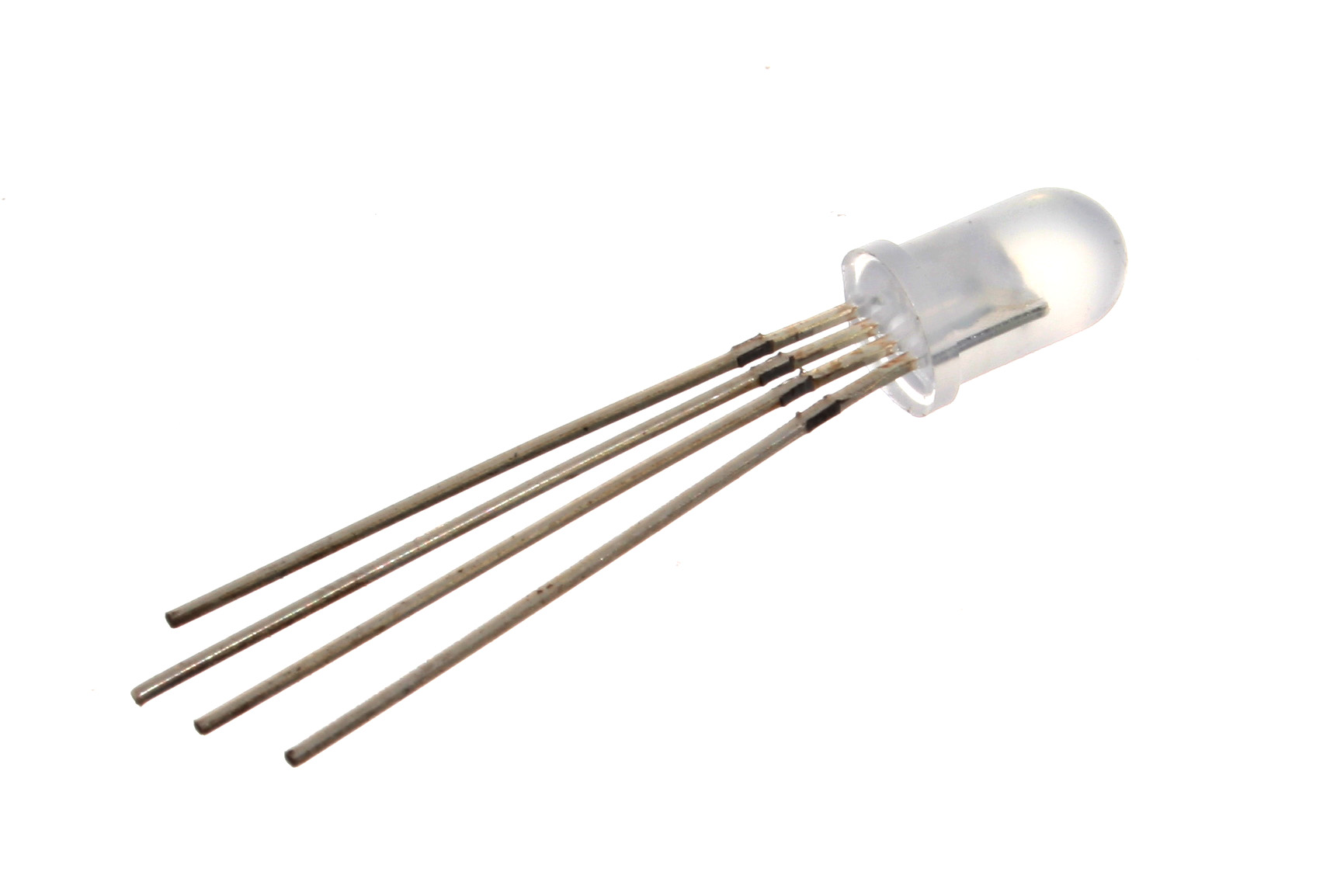
FileRGB LED.jpg Wikimedia Commons
LED and Photodiode are both semiconductor-based electronic devices that function by the interaction of light energy and electricity.LED converts the electricity into light, whereas a photodiode converts the light energy into electricity. Therefore, LEDs and photodiodes are quite different in the way they operate. In this article, we will highlight all the major differences between LEDs and.
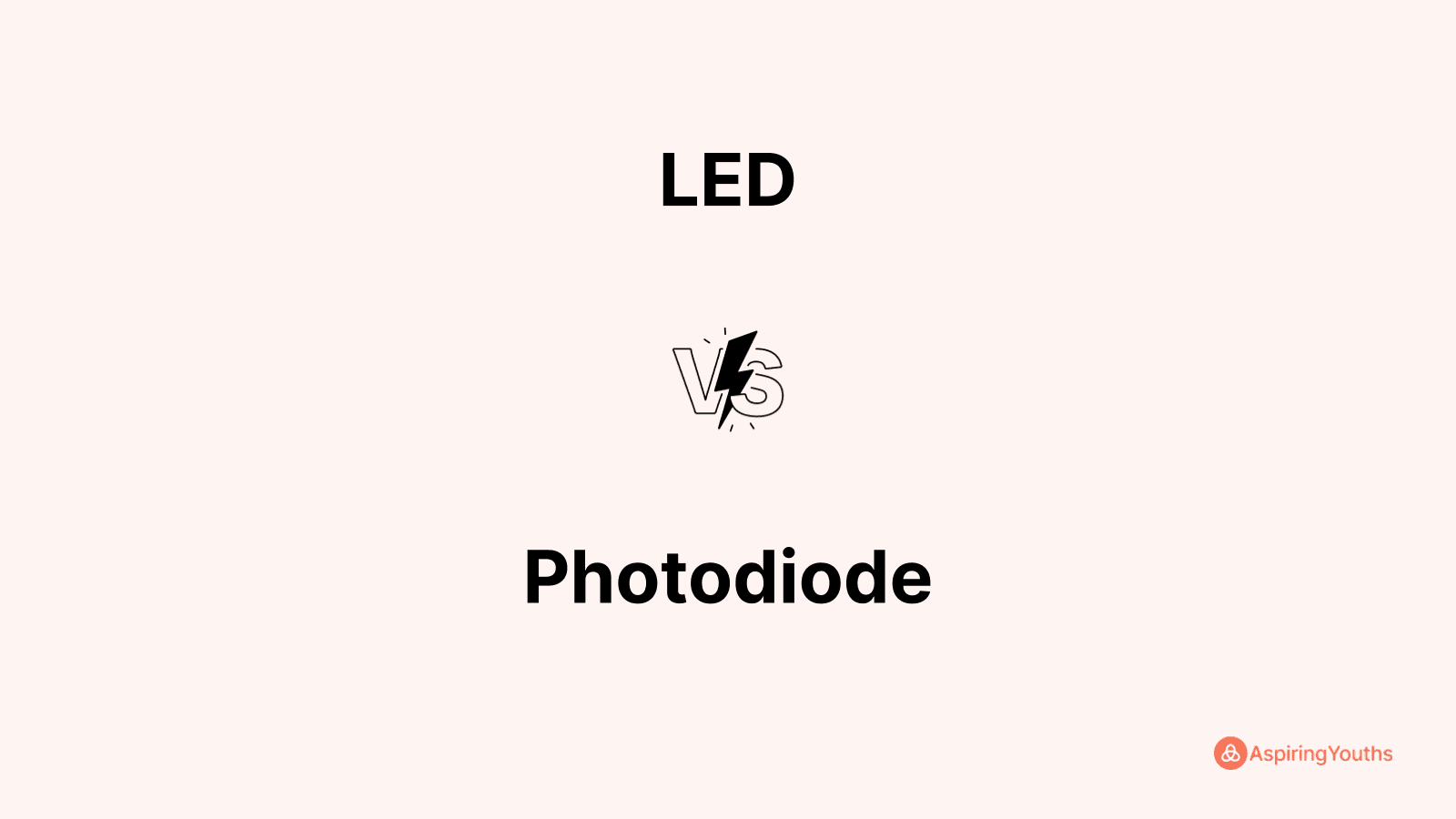
Difference between LED and Photodiode
Key Differences Between LED and Photodiode. An LED converts electrical energy applied into its terminals into equivalent light form. On the contrary, a photodiode is able to convert supplied light energy into equivalent electrical form. A light emitting diode operates in forward biased condition only. While a photodiode is basically a reverse.